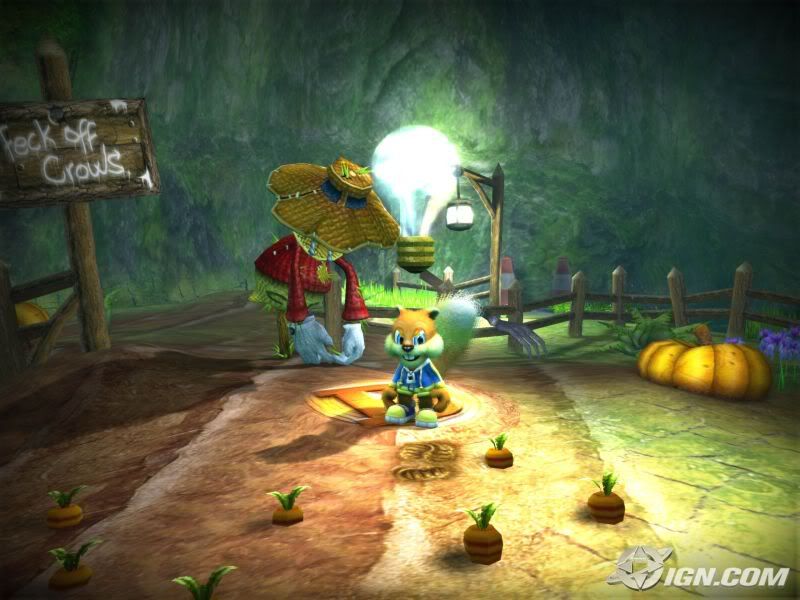bonzobanana said:
Really wierd about your component cable quality. I do know many cables varied in quality but the good models gave an excellent picture but of course it also depends on how good the display device deals with component too.
Are you saying your component cable quality is worse than wii, gamecube (if you've tried it) or ps2? I have no such issues and for many years used xbmc for media tasks too and it was brilliant quality.
|
I am saying compared to HDMI or DVI, Component can't touch it.
Can't comment on Wii, Gamecube or Playstation 2. (I don't own those consoles.)
The cable quality is fine.
When I first got my Xbox 360 Core console back in 2006~ I used component. (There was no HDMI) and later I upgraded to an Arcade console (And Microsoft sold me a 20Gb HDD for $20 AUD which was a bargain at the time.) and I moved over to HDMI. The difference was night and day.
On the Original Xbox, I have both Composite and Component cables and the image has always looked "soft" rather than crisp and clean, it's far worse on Composite though, partly that is because the resolution is typically only 480P, but even with 720P titles, I would prefer to emulate the game on Xbox 360 and use the HDMI port.
With that in mind, I have always used digital connectivity... Back in the 90's I had a TNT2 which only had a DVI connector and since that day I have used DVI for everything with it's eventual replacement via HDMI and Display Port... So the difference that Analogue connectivity brings has always been jarring to me when I was forced to use it on consoles. (Xbox, Xbox 360.)
You are correct that the TV does play a big role due to scalers, analogue to digital conversion (Which results in image quality loss) and other factors... But it's been the same story for decades and doesn't detract from the fact that digital connections are superior.
bonzobanana said:
At the time I was using a Hitach 42PD7200 plasma I think or something like that. I may not have got the model number quite right. It's a £3000 plasma tv with a powered stand that I picked up for £13 faulty and it only needed a 30p resistor to fix. It gave an amazing picture with component using a alis panel.
|
I was using an LG CRT when the original Xbox launched, it had Composite, Component, DSUB and DVI and could do up-to 720P, which is the kind of display that the original Xbox should have shined on. But Component didn't make the experience enjoyable for me.
When the Xbox 360 launched I had upgraded to an LG 32" LCD CFL 720P panel (LCD TV's were so expensive back then!) and the same issue stuck around.
Now I have a 60" and a 75" TV and the increased panel size accentuates the issues that analogue signals bring.
bonzobanana said:
On the Gamecube the 16MB was used for audio and the optical disc cache and its small disc meant access times were already very low. The gamecube almost felt like a cartridge system such was the speed of the games loading from those little discs. If 16MB was required there then 64MB minus audio use doesn't seem wrong for caching a dvd disc. If you remember the long loading times of ps2, you don't really get that on wii and definitely not Gamecube. I'm pretty sure data would generally be moved to and from 1t ram and gddr before being processed from 1t ram. I could be wrong but the gamecube and wii are pretty much identical and run all the same games its just in the wii you have that 50% speed boost and the 16MB slow memory replaced by the 64MB GDDR. Surely it has to appear identical to the 16MB in gamecube mode and be accessed a similar way to enable 100% compatibility. When you are ensuring 100% compatibility you can't radically re-design how something operates. Also the most half-assed wii games seem to have decent loading times compared to ps2 games. I think we will have to agree to not agree on this one. Not that I'm saying the memory can't be cleverly used but I think audio and caching the dvd drive is its main use normally.
|
I have actually spent more time than I care to admit studying how the Gamecube and Wii's memory pools are mapped and what they can use it for.
But no. All that memory isn't caching the Disc drive... Even on PC with *much* faster Optical Blu-Ray Drives, they usually only come with 2-8Mb of cache.. And that is only because they also write data to optical discs that require such large buffers.
It makes zero sense having 16-64Mb of cache for a DVD drive that is only reading at 6x or 8MB/s. Zero at all.
The 1t Ram should be thought of like a typical SRAM or something like eSRAM/eDRAM. The GDDR3 is the system memory.





















































